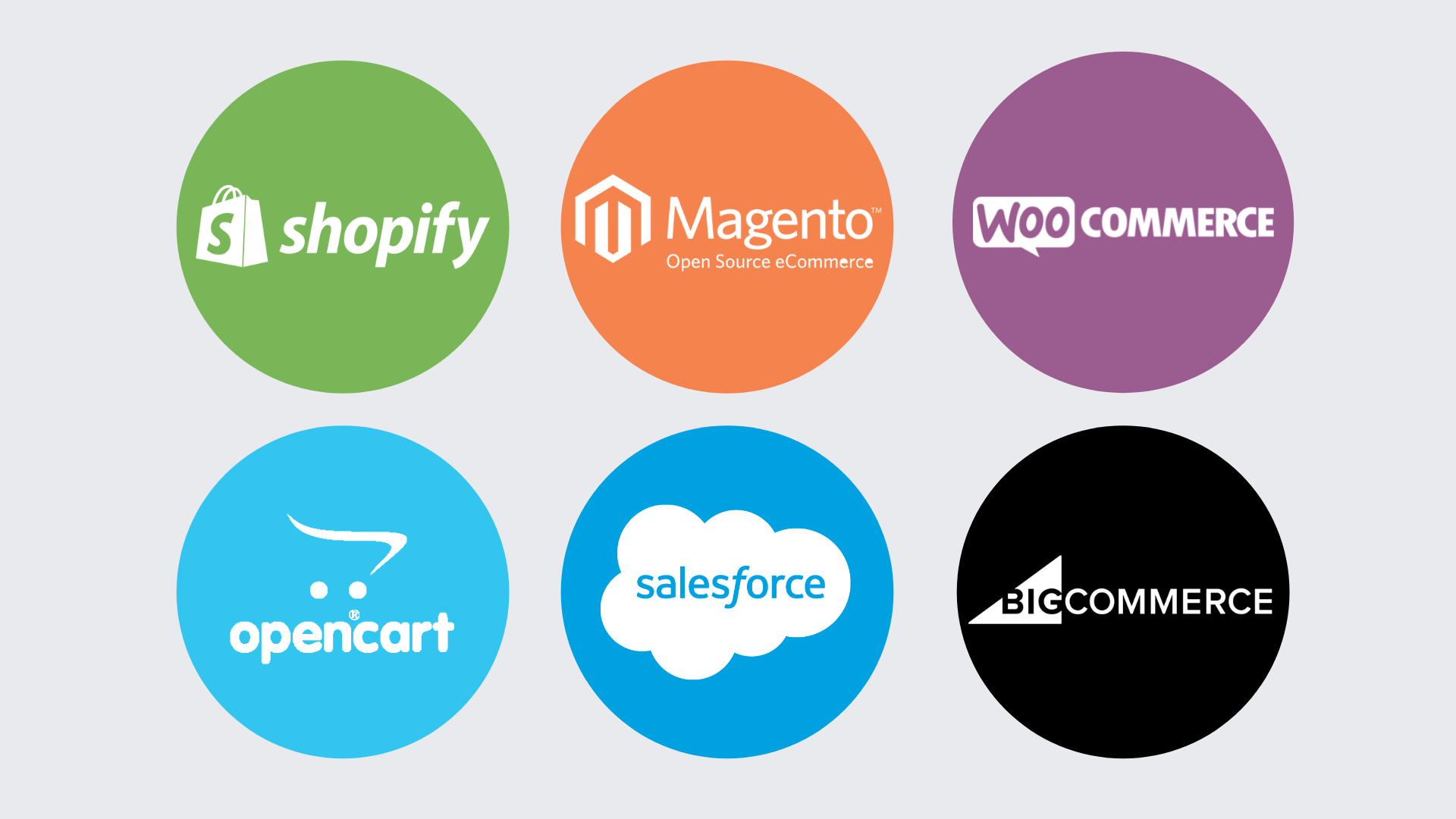Amazon vs Shopify: Difference between Amazon and Shopify

Online selling has seen phenomenal business growth, particularly in the past couple of years, hastened primarily due to the worldwide covid pandemic. For the most part, the growth has been largely visible due to marketplaces like Amazon, Walmart, Flipkart (India) and even eBay (online auction portal) to name a few. Additionally, there has also been awareness among sellers to look for sales channels beyond Amazon. (For this discussion, I will use Amazon to label most marketplaces, such as Walmart, Flipkart or eBay). Those inquiries and demands have also grown significantly, during a covid pandemic. Dominating those discussions have been eCommerce platforms like Shopify, Magento, WooCommerce, BigCommerce and Salesforce Commerce Cloud, to name a few.
The underlying reasons for the increase in inquiry, and subsequent demand, could be varied. Be it expanding existing customer base, improving margins, enhancing customer experience, branding, or even the most obvious, mitigating the risk of having all eggs in one basket (or channel).
In this discussion, we will discuss and compare existing marketplaces, like Amazon, with established eCommerce platforms like Shopify (For this discussion, we will use Shopify to label most eCommerce platforms, including Magento, WooCommerce, BigCommerce and Salesforce commerce cloud), and also how to go about it. We will compare individual eCommerce platforms for a later discussion/blog).

Amazon and Shopify, a brief comparison
Amazon (and similar marketplaces)
- Amazon is an online marketplace that helps sell goods and services, either directly or as a middleman, to millions of its customers. Originally an online bookseller has now expanded to a wider variety of consumer goods and digital media, just to name a few.
- If you are an online seller/retailer, then Amazon Seller Account will help you to reach out to your potential customers. Amazon gives the seller a pipeline of qualified customers, whose credit card information they often have, and also have a reasonably higher conversion rate.
- Amazon has a robust sales channel, among other things, which clearly helps drive revenues for the sellers. Addressing cash flows, particularly for small businesses.
More notable observations, for a seller
· Amazon has a single-minded focus on sales and higher revenues. With Amazon, you are investing in growing your ongoing sales. Immediate gratification which is hard to ignore; but comes with its consequences
· Oftentimes, there is not a significant opportunity to differentiate yourself from the competitors, apart from the price of course. This till the relationship with the end customer is established as a preferred vendor, which often is not guaranteed. Price oftentimes end up being the driving factor.
· Amazon would typically charge 15% for its service charges, or sometimes even higher, based on products and offerings. Not to mention Amazon Ads, all of which add up to the overall cost.
“With Amazon, you are investing in growing your ongoing sales. Immediate gratification which is hard to ignore; but comes with its consequences”
Shopify (and similar platforms)
Ecommerce platforms, where you can build your own portal and services.
More flexibility and independence to build a unique customer experience and brand value, using various tools, to highlight your offerings.
Most importantly, with Shopify there is a greater focus on acquiring customers and loyalty, resulting in higher margins; rather than short term sales and immediate gratification.
More notable observations for a seller
Takes time, effort and cost, to build the experience. The investment includes planning, development, acquiring people with certain skills-set and other assets. Typically, limited immediate gratification, similar to an Amazon (or other) marketplace.
“With Shopify there is a greater focus on acquiring customers and loyalty, resulting in higher margins; rather than immediate gratification.”
Why the need for eCommerce platforms, when you already have a marketplace
For a seller, rewards from both (marketplace and eCommerce platforms) are quite different and hence needs to be valued differently. The key is being aware of the differences.
While interacting with sellers, I have often heard this phrase, "With Amazon, my sales have increased significantly, but there has not been a comparable uptick in my bottom line or profits"
With marketplaces such as Amazon, there is a notable difference between the top line and bottom line, which as a seller you need to be aware of.
In single-minded pursuit of sales, bottom life profits often get missed out. Sometimes in the hope that eventually things will level out, but oftentimes consistent growth overtime is not guaranteed, because, at Amazon, you are largely competing with your competitors on price. Kindly note, this doesn’t mean that all sellers on Amazon are at loss or not profiting at all, but a comparative understanding of the bottom-line profits is critical if you plan to stay and think long term.
I always tell my customers, that Shopify (other ecommerce platforms included) is money spent to acquire customers, while with Amazon, it is money being spent to acquire immediate sales, of course, the choice is eventually yours to make. To summarize, you need to have a different mindset when working on Amazon and Shopify, they are different ecosystems in themselves. This needs to be sorted out before you decide to march in, else you will endure confusion followed by frustration.
Reluctance to move into eCommerce platforms
Though there has been greater awareness and inquiry on e-commerce platforms, however, our data also indicates that there has often been a reluctance to march forward wholeheartedly, on implementing eCommerce solutions. This is notably, for me, with Small and Medium Enterprises (SM&E’s) in emerging countries such as India. The reasons are often varied, but I will highlight some of the key ones, encountered in my discussions with sellers; for those who already sell via amazon, and want to sell online using eCommerce platform. Highlighting the top three
1. Initial CAPEX Investment- An initial investment is required to plan, assemble and implement the solutions, requiring effort, people and investment.
2. Lack of Understanding- Within this, I will highlight the top 3 based on my discussion- technology, digital marketing and process (ways of working). This, I believe, is often the one that results in the “NO-GO” decisions.
3. People- Given the nature of the platform, identifying and onboarding people with the right skills-set is obviously critical.
While I do believe the initial resistance has an argument, I know, based on prior implementations that, there is a way to successfully address the above, only if you know how to go about it.
Sellers agree on the benefits of platform, but not sure how to get there
Due to prior experience implementing eCommerce platform solutions, like Shopify, Salesforce cloud, WooCommerce or Magento, I don’t doubt the value of adding eCommerce platforms into the mix, not just in long term, but also in the near term. However, I would like to caution on getting your understanding and process right during eCommerce platform implementation. Though there is a lot to write, I will highlight 3 areas.
• Strategy: Obviously is critical while implementing eCommerce solutions, I see it as a compass to navigate yourself, during high seas, as you define the NorthStar for your business.
• Setting realistic expectations– Outlining expectations, not just at a high level from the eCommerce initiative, but also around people, processes and technologies.
• Implementation– If you have capable people, aligned on the strategy and onboard the right mix, on the technology front, with the prior 2 pointers, the implementations would not just be worthwhile, but open new doors.
Should I have all my eggs in one basket?
- Most sellers, due to the sales volume, tend to get habituated with Amazon as their dominant sales channel. However, as the pandemic has taught us, never to be dependent on one sales channel. Be it Amazon, Facebook or even Google all are often quick to blacklist vendors or partners for infractions (even if by inadvertent). For a small or mediums sized business that is over-dependent on Amazon, for sales, a blacklist could prove to be a death kneel, due to evaporation on revenues and subsequent cash flows.
- Having yourself available in multiple channels, makes you reasonably bulletproof, in case there are issues with one of your channels. Additionally, you can unlock those unique elements from those specific business channels
Notable aspects of Shopify
When we discuss eCommerce platforms, there is a lot to explore, in terms of options, be it customer experience, branding, 3rd party integrations, as compared to selling on Amazon. I will attempt to list a few
- Engaging and interactive site experience
- Visually appealing photos and pages
- Page freshness with regular and relevant content curation
Comparative benefits of Shopify
- Unique customer experience with a high stickiness factor
- Wider options on incentivizing your customer with discounts and promotions
- Completely owning the result of your effort, rather than being dependent on your channel partner
- Customer intelligence and outreach- Flexibility, and tools, to effectively understand and reach customers, with components such as analytics, email collection, notification and many more
- Flexibility to drive quality content, including blogging, resulting in a wider outreach
- Independence to drive what’s best for you, and your company, and not the channel
Approach, recommendation and next steps
I am often inquired, particularly by existing sellers on amazon, (or Flipkart, eBay etc), if it should be either Amazon (or its likes) or Shopify (Magento, WooCommerce, Salesforce cloud or others depending on budgets). My simple answer is BOTH, at least in the initial phases, emphasising again that Amazon and Shopify are not the same. Though both help you sell products and services online, their similarity ends just there, anything otherwise would be misleading.
Both marketplaces and eCommerce platforms have their own importance in the eCommerce domain. However, as a seller, you need to reflect on your goals, existing situation and where you would like to be, maybe 1-3 years down the line. In my experience, often in urgent, and short-term pursuits, the important long-term goals get blurred.
Our general recommendations, for SME’s, exploring eCommerce platforms, is as follows
- If you are presently selling on Amazon, or even starting fresh. Use Amazon as a sales channel for immediate revenue generation, this will also address your short-term cash flow needs.
- Steadily invest and build your long-term capabilities, around additional eCommerce sales channels, such as Shopify. A channel where you will have greater control and freedom to adjust to changing business needs or unexpected turn of events. More importantly, reduce your dependence on marketplaces like Amazon and help build your business long term.
Next Steps
- Define a North Star for your business, that navigates you, as the business and eCommerce world evolve. For example, the objectives could be higher margins or revenues, wider sales reach elevated customer experience, branding, higher customer retention or a combination as applicable.
- We recommend, if you need further guidance, reach out to Strategy consultants/ eCommerce solution agencies, on strategy and execution, to help make this journey fulfilling and fruitful.
All these points are kept in mind by the web development company in pune.





